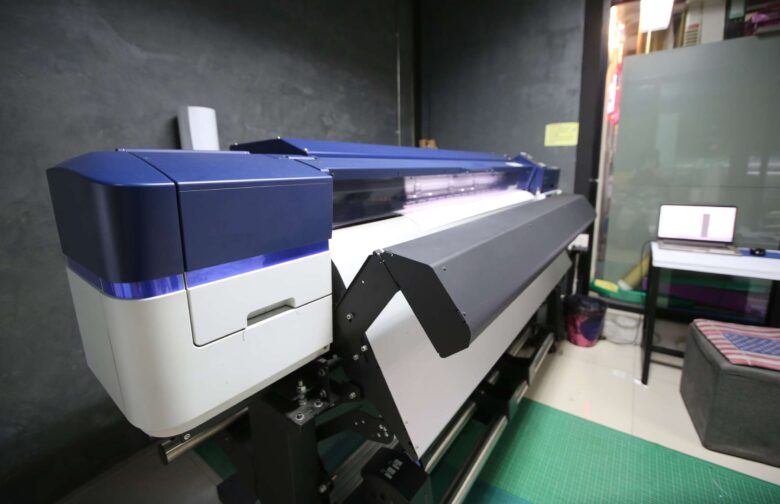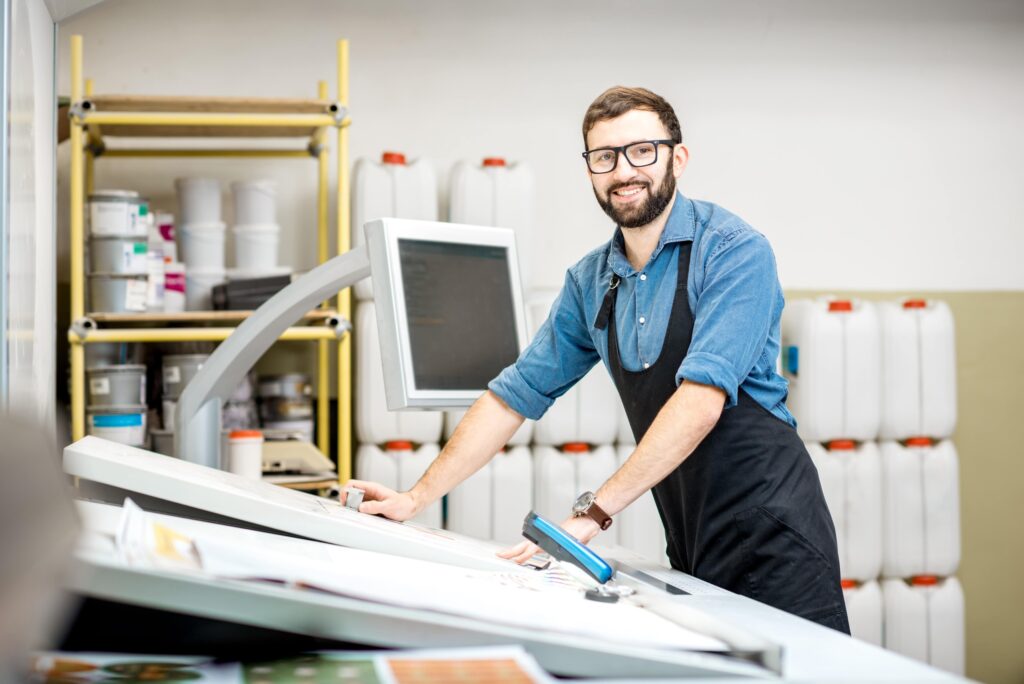There are different printing services available for various needs. You can get business cards, photo prints, or custom-designed products. Digital printing is popular and uses digital files for high-quality prints with accurate colors. This option is affordable and efficient. Online printing allows you to order prints conveniently through a website or online service. You can upload files, choose options, and have prints delivered to your doorstep. This saves time and shipping costs. Print-on-demand is another option where products are printed only when an order is placed. This is useful for businesses that want to reduce inventory costs and offer a wider range of products. You can find a printing service that meets your needs and provides high-quality prints and products.
Inkjet Printing
Inkjet printing is a versatile method used in the field of digital printing. It involves the application of tiny droplets of ink onto a variety of materials, making it a popular choice for a wide range of applications.
One of the key advantages of inkjet printing is its versatility. It can be used to print on various materials, including paper, cardstock, fabric, and even t-shirts. This makes it a valuable tool for businesses and individuals alike, allowing them to create custom designs on different surfaces.
Over the years, inkjet printing has experienced significant growth and popularity, largely due to advancements in technology. Printers now offer improved color accuracy, faster printing speeds, and higher resolution, resulting in good-looking prints that meet the demands of modern consumers. Furthermore, inkjet printers also provide the option for same-day pickup and online printing services, making it an affordable and convenient choice for many.
Laser Printing
Laser printing is a widely used printing technology known for its precision and speed. It operates by using a laser beam to create an electrostatic image on a drum, which is then transferred to the printing surface.
One of the key advantages of laser printing is its versatility. It can be used to print on a wide range of materials, including letterhead, cardstock, fabric, and even t-shirts. This makes it an excellent choice for businesses and individuals who require custom designs on various surfaces.
Laser printing has gained popularity in recent years, thanks to advancements in technology. Printers now offer improved resolution, allowing for sharper and more detailed prints. Additionally, laser printers also provide faster printing speeds, making them suitable for high-volume print jobs.
Digital Printing
Digital printing has revolutionized the printing industry, offering a convenient and efficient method for producing high-quality prints. Unlike traditional printing methods, digital printing does not require the use of plates or screens. Instead, it involves the direct transfer of digital files onto various materials using advanced printers.
One of the key benefits of digital printing is its versatility. It allows for printing on a wide range of materials, including paper, cardstock, fabric, and even promotional items like business cards and marketing materials. This makes it an ideal choice for businesses and individuals looking to create custom designs on various surfaces.
What sets online printing services apart is their commitment to customer satisfaction. Most providers offer a 100% satisfaction guarantee, ensuring that you are happy with the final product. They also offer a wide range of options to customize your prints, such as different paper types, finishes, and sizes.
Offset Printing
Offset printing is a commonly used printing technique that involves the transfer of ink from a plate to a rubber blanket and then onto the printing surface. It is a cost-effective and high-quality printing method that is widely used for producing a variety of materials, including magazines, newspapers, brochures, books, and more.
The offset printing process begins with pre-press production. This involves the conversion of digital files into negatives, which are then used to create printing plates. These plates, typically made of aluminum, are coated with photosensitive chemicals that react to light.
Once the plates are ready, they are mounted onto the printing press. The press contains ink rollers that transfer the ink onto the plates, specifically to the areas where the image or text is located. The inked plates then transfer the image onto a rubber blanket, which in turn presses it onto the final printing surface.
This process allows for consistent and sharp printing results with excellent color accuracy and detail. It is especially suitable for large print runs, as the plates can be reused multiple times. Additionally, offset printing offers a wide range of paper options and finishes, allowing for the production of high-quality and visually appealing products.
Screen Printing
Screen printing, also known as silk screening, is a popular printing method used to transfer ink onto various surfaces. It is a versatile process that can be applied to a wide range of materials, including fabric, glass, metal, plastic, and paper.
The screen printing process involves creating a stencil, called a screen, which is made of a fine mesh material, usually silk or polyester. The screen is then stretched tightly over a frame. Areas of the screen that are not part of the design are blocked out using a light-sensitive emulsion or stencil film.
Once the screen is prepared, ink is forced through the open areas of the mesh using a squeegee. The ink is pressed onto the surface, creating the desired design or pattern. This method allows for precise and vibrant color application with sharp details.
Screen printing has various applications across industries, including clothing and apparel, promotional products, signage, and packaging. It is commonly used to print t-shirts, hoodies, tote bags, posters, and banners. Its versatility also makes it suitable for printing on curved or uneven surfaces.

Conclusion
In conclusion, printing services offer a range of benefits and options for various printing needs. The screen printing process provides precise and vibrant color application with sharp details, making it suitable for a wide range of industries and applications. Its durability and cost-effectiveness for large production runs are additional advantages.





